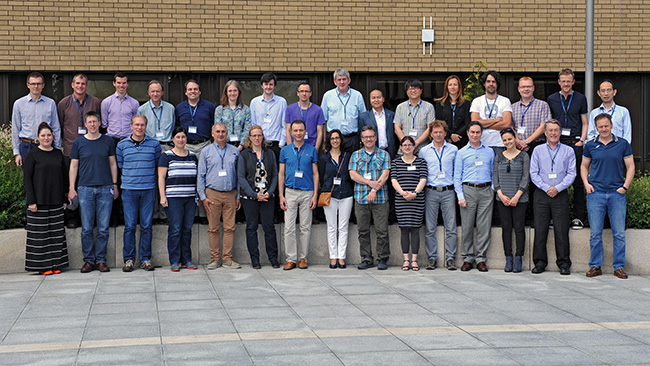ECMWF | Reading | 22-25 May 2017

Workshop description
This workshop was organised in collaboration with EUMETSAT (NWP-Satellite Application Facility) and was intended to assess the state of readiness ahead of the launch of the METEOSAT Third-Generation geostationary satellite. By measuring radiation in thousands of separate channels its Infrared Spectrometer (IRS) will provide detailed information on atmospheric temperature and composition (similar to existing hyperspectral sounders), but deliver this information with very high temporal resolution (~15 to 30 minutes repeat). Such observations are completely unprecedented and while the potential impact on analyses and forecasts is enormous, the successful use of these data presents some significant scientific and technical challenges. The workshop looked at the very latest progress in instrument calibration and spectral characterisation, advances in radiative transfer modelling and the various assimilation strategies being considered to exploit this unique and exciting source of observations.
Presentations
| Welcome to ECMWF Peter Bauer (ECMWF) |
|
| Science applications and product plans for MTG-IRS Bojan Bojkov (EUMETSAT) |
|
| Brief introduction of the hyper-spectral infrared sounder from FY-4A and FY-3D Qifeng Lu (NSMC/CMA China) |
|
| Spectral and radiometric characteristics of MTG-IRS Dorothee Coppens (EUMETSAT) |
|
| Radiative transfer modelling for MTG-IRS James Hocking (UK Met Office) |
|
| Potential for MTG-IRS to impact the forecasting of severe precipitation cases David Lavers (ECMWF) |
|
| Possibilities for handling SRF variation in the MTG-IRS detector array Nigel Atkinson (UK Met Office) |
|
| Validation of MTG observed spectra by comparison to LEO hyperspectral sounders Dave Tobin (SSEC University of Wisconsin) |
|
| Assimilation issues for the exploitation of humidity sensitive radiance observations from GEO satellites Elias Holm (ECMWF) |
|
| The impact of hyperspectral infrared radiance observations on NWP forecasts Andrew Collard (NOAA/EMC) |
|
| Atmospheric Motion Vector generation from MTG-IRS Régis Borde (EUMETSAT) |
|
| PCA assimilation techniques applied to MTG-IRS Marco Matricardi (ECMWF) |
|
| Assimilation of transformed retrievals applied to MTG-IRS Stefano Migliorini (UK Met Office) |
|
| Detecting cloud contamination in MTG-IRS observed spectra Jérôme Vidot (Météo-France/CMS) |
|
| Exploiting cloud affected hyperspectral geostationary radiances Alan Geer (ECMWF) |
|
|
Hyperspectral observations of land surfaces: Temperature and Emissivity |
|
| Assimilation of simulated IRS data in a convective scale model Nadia Fourrié (Météo-France) |
|
| Aerosol detection/estimation with hyperspectral thermal infrared satellite measurements Sophie Vandenbussche (Royal Belgian Institute for Space Aeronomy) |
|
| The potential impact of ozone sensitive data from MTG-IRS Rossana Dragani (ECMWF) |
|
| Assimilation Opportunities and Applications Working Group Notes | |
| Instrument Processing and RT Simulation Working Group Notes | |
|
ECMWF / EUMETSAT NWP-SAF Workshop Executive Summary |
